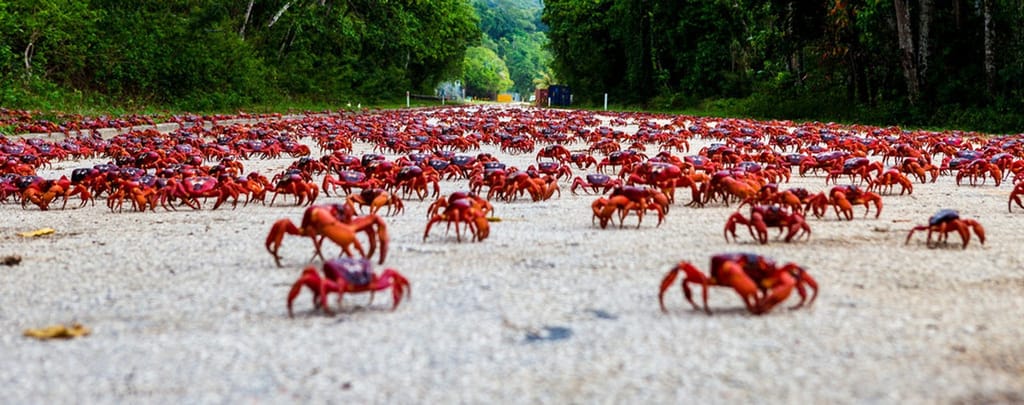Millions of red crabs swarmed on roads and bridges on Australia’s Christmas Island. It is part of their annual journey to the ocean, closing several routes. Every year, the whole crab population of the little island in northeastern Australia migrates. It estimates to be around 50 million, the largest in the world.
The mesmerising sight of crabs taking over wide swaths of highways and parks captivates residents and visitors alike, who are once again racing to snap images and videos of the migration. The cannibalistic crabs all leave the forest at the same time after the rains in October and November, marching to the ocean near the national park to mate and reproduce. They also pass through residential areas on their long voyage, which is considered one of the world’s greatest migrations.
Female crabs can lay up to a hundred thousand eggs during the mating season
The crabs also turned up at the door of an office block, the organization reports. Residents of the Drumsite settlement in the northeast were trapped in their homes on Sunday due to the sheer number on the roads. And workers were forced to take the crabs off the tarmac in a bid to keep the island moving. “With red crab migration in full swing on Christmas Island. The crabs are turning up everywhere, including at the door of an office block! Our staff have been out managing traffic, raking crabs off roads and providing updates to the community on road closures,” the tweet says.
Authorities spend weeks planning for this exodus, closing roads and directing people to park safely. Male crabs are the first to arrive at the ocean’s edge. It is followed by females. They can lay up to a hundred thousand eggs during the mating season. As a result, they spend two weeks in burrows. The migration’s timing is determined by rainfall and the phase of the moon. The crabs seem to know just when to leave their burrows. In order to spawn before dawn on a receding tide during the last quarter of the moon. They are predicted to reach the coast by the end of this month this year.
